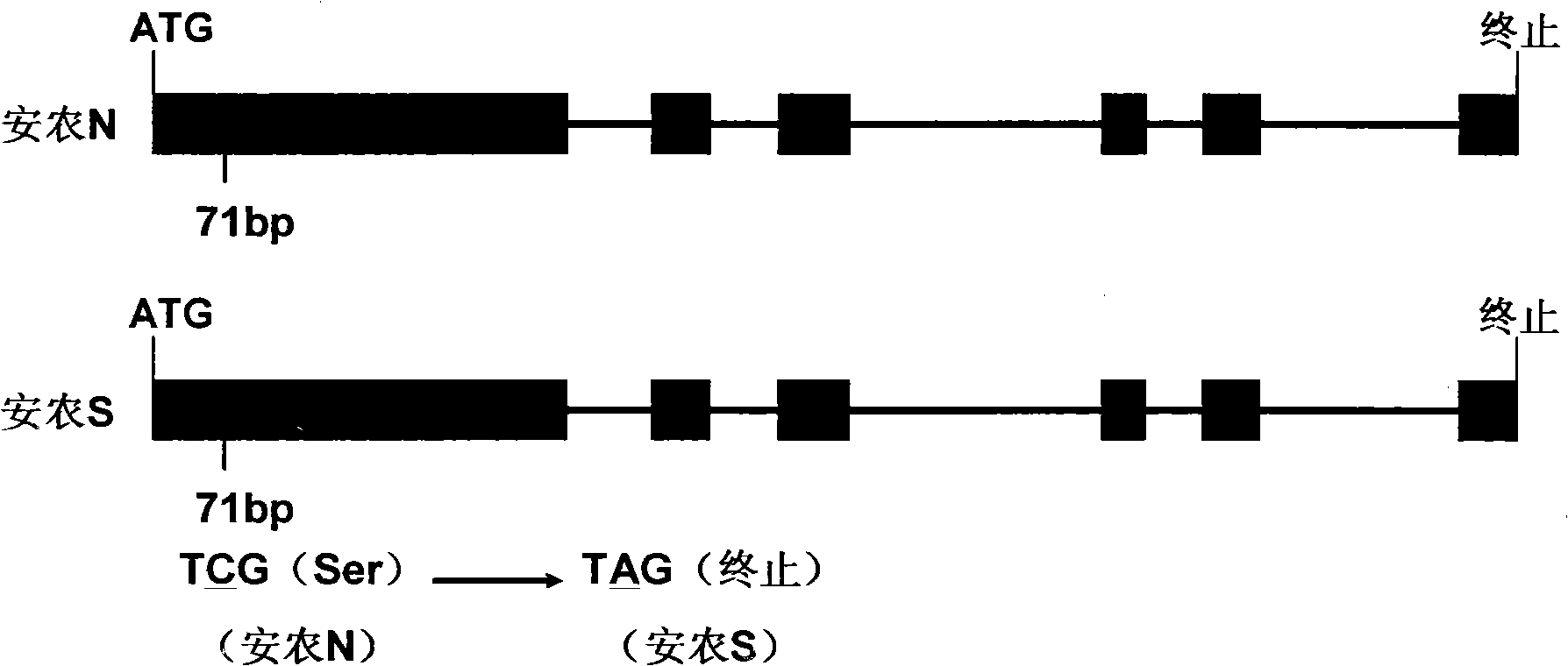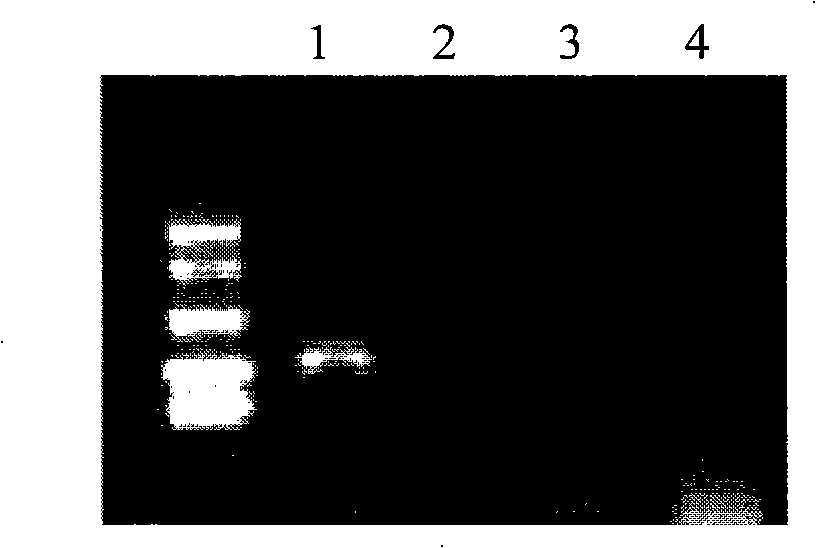Temperature sensing male fertile gene and use thereof
A technology of male fertility and temperature-sensitive sterile lines, applied in the field of genetic engineering, can solve the problem of unclear molecular basis of Annong S-1 temperature-sensitive sterile lines, inability to better select rice, and isolate and clone temperature-sensitive sterile Gene tms5 and other issues to achieve the effect of improving selection efficiency
- Summary
- Abstract
- Description
- Claims
- Application Information
AI Technical Summary
Problems solved by technology
Method used
Image
Examples
Embodiment 1
[0033] Example 1 Fine mapping of tms5 (screening of polymorphic molecular markers and linkage mapping of tms5 gene)
[0034] According to the public rice genome sequence database (http: / / www.ncbi.nlm.nih.gov), multiple molecular markers have been developed in this region, as shown in Table 1:
[0035] Table 1 Molecular markers of polymorphisms closely linked or co-segregated with tms5
[0036]
[0037] AN1, PL1 and NAC1 in Table 1 are insertion / deletion (InDel) markers; RA1 is a single nucleotide polymorphism (SNP) marker. The detection method of SNP marker is as follows: in the first PCR, use the primers "RA1F" and "RA1R" to amplify for 33 cycles, then take 0.5 μl of the PCR product as the template for the second PCR, prepare two reactions for each sample, and use Primers "RA1F" and "RASR" are specific reactions for thermosensitive sterile genotypes, and primers "RA1F" and "RANR" are specific reactions for wild genotypes. Amplify for 8-10 cycles, use 6% polyacrylamide Ge...
Embodiment 2
[0039] Cloning and sequence analysis of embodiment 2tms5
[0040] According to the genome DNA sequence of rice (japonica rice) released by GenBank and the analysis of RiceGAAS software (http: / / ricegaas.dna.affrc.go.jp), there are only 2 predicted genes in the 8.4kb region of the location. These 2 genes They are pectate lyase (Pectate lyase, abbreviated as PL) and nuclease Z (RNase Z, abbreviated as RZ). The pectin lyase gene encodes a protein of 446 amino acids, and the nuclease Z gene encodes a protein of 302 amino acids.
[0041] Using primers PLf (5'-CTCCTCTCGATGCACTCATG-3') and PLr (5'-GATAGCATGACATGGCATTG-3') and RZf (5'-CACGTCGTCAACAACGACTAC-3') and RZr (5'-CCTGTTAACCGGTIGAGGTG-3') from the normal variety Annong N and thermosensitive male sterile line Annong S-1 were amplified by PCR technique to amplify the complete genome sequence of PL and RZ (including promoter and coding region), and cloned into plasmid vector pUC18. After sequencing analysis, it was found that th...
Embodiment 3
[0042] Example 3 Genetic transformation identifies the function of the target gene
[0043] Using primers RZf (5'-GTTCGGTGTGTGAAGGGGTG-3') and RZr (5'-CCTGTTAACCGGTTGAGGTG-3') the 4kb RZ gene fragment (comprising promoter region, coding region, and its downstream region sequence) amplified from Annong N ) was cloned into the binary transformation vector pCAMBIA1300. The expression vector was introduced into common soil Agrobacterium tumefaciens strain EHA105 by electric shock method. T 0 transgenic plants. Through molecular detection, transformants containing exogenous genes were obtained, and the pollen fertility of these transformants was normal under high temperature conditions (28-35°C), see Figure 5 and Figure 6 .
[0044] Harvest T 0 Generation seeds, planted T 1 Under high temperature conditions (28-35°C), the pollen fertility of the T1 generation segregated, that is, the pollen of the plants containing the transgene was fertile, while the pollen of the plants ...
PUM
 Login to View More
Login to View More Abstract
Description
Claims
Application Information
 Login to View More
Login to View More - R&D
- Intellectual Property
- Life Sciences
- Materials
- Tech Scout
- Unparalleled Data Quality
- Higher Quality Content
- 60% Fewer Hallucinations
Browse by: Latest US Patents, China's latest patents, Technical Efficacy Thesaurus, Application Domain, Technology Topic, Popular Technical Reports.
© 2025 PatSnap. All rights reserved.Legal|Privacy policy|Modern Slavery Act Transparency Statement|Sitemap|About US| Contact US: help@patsnap.com



